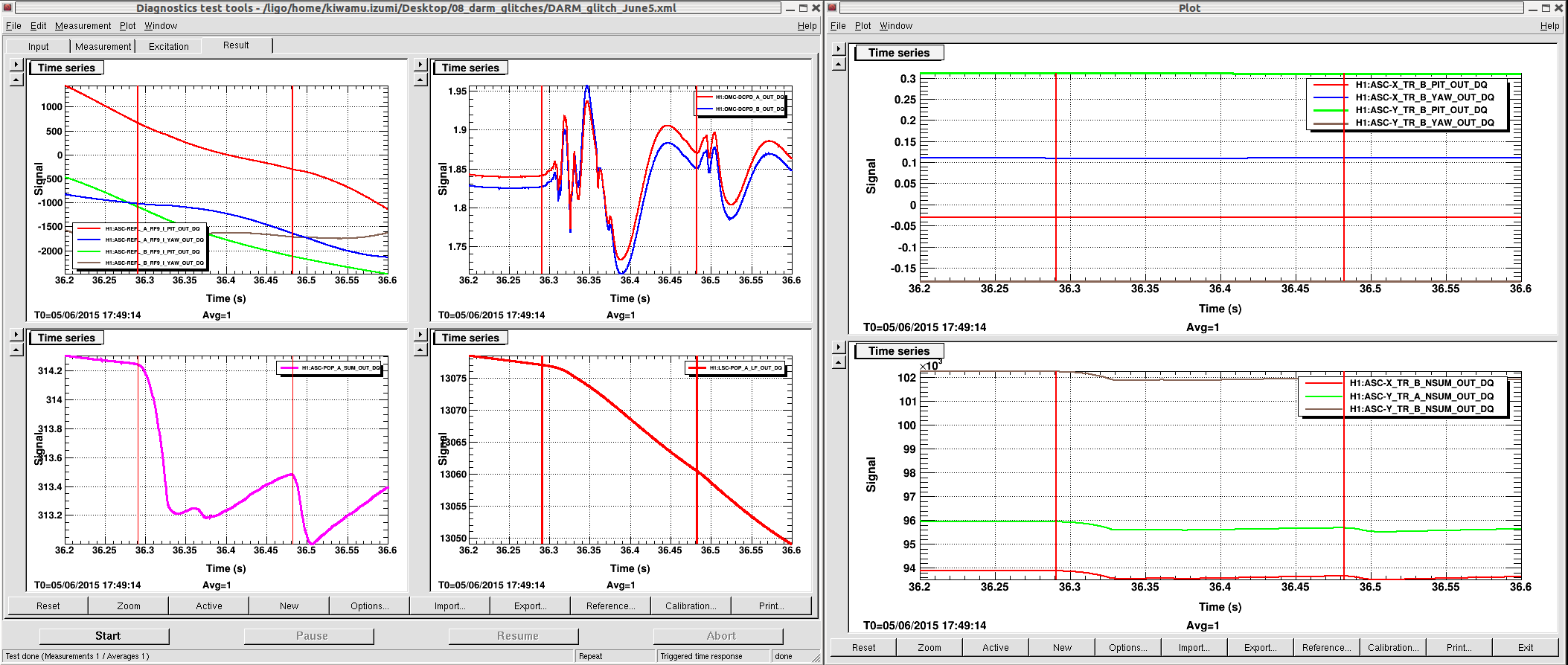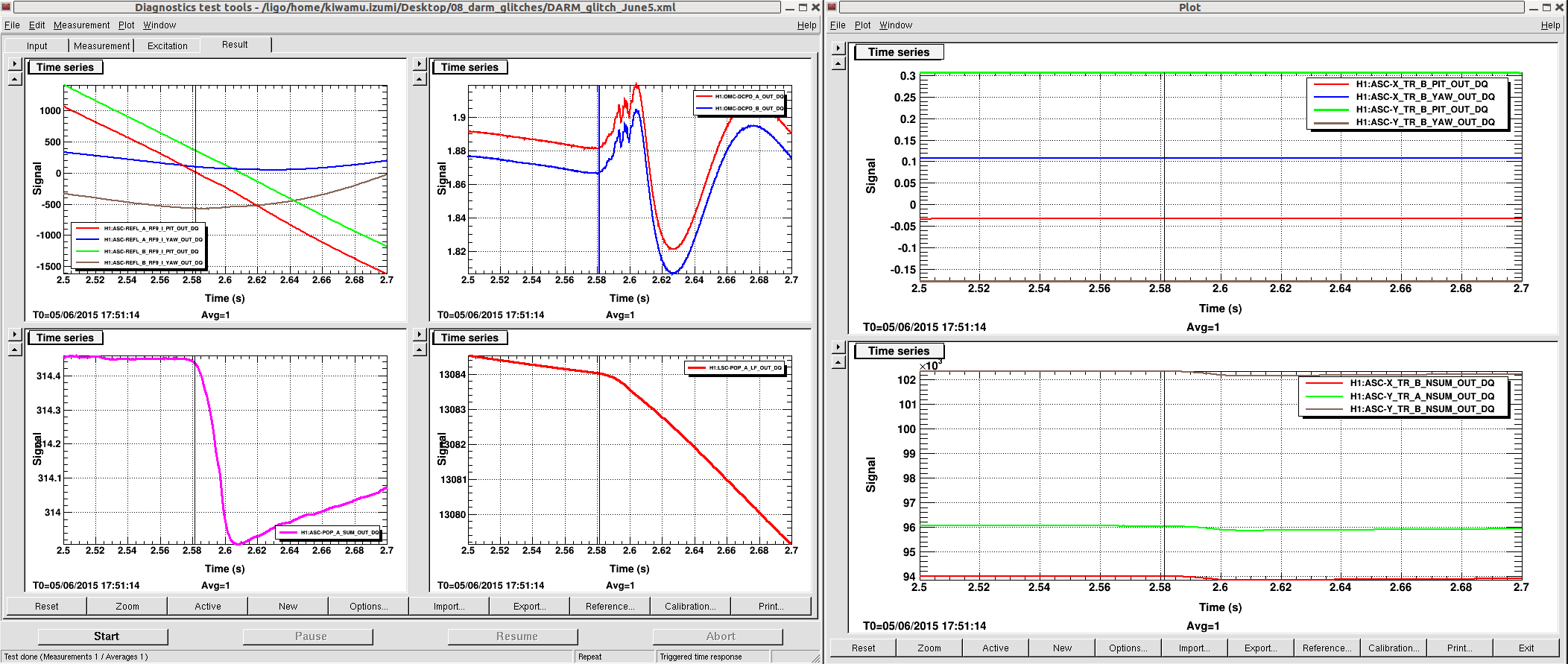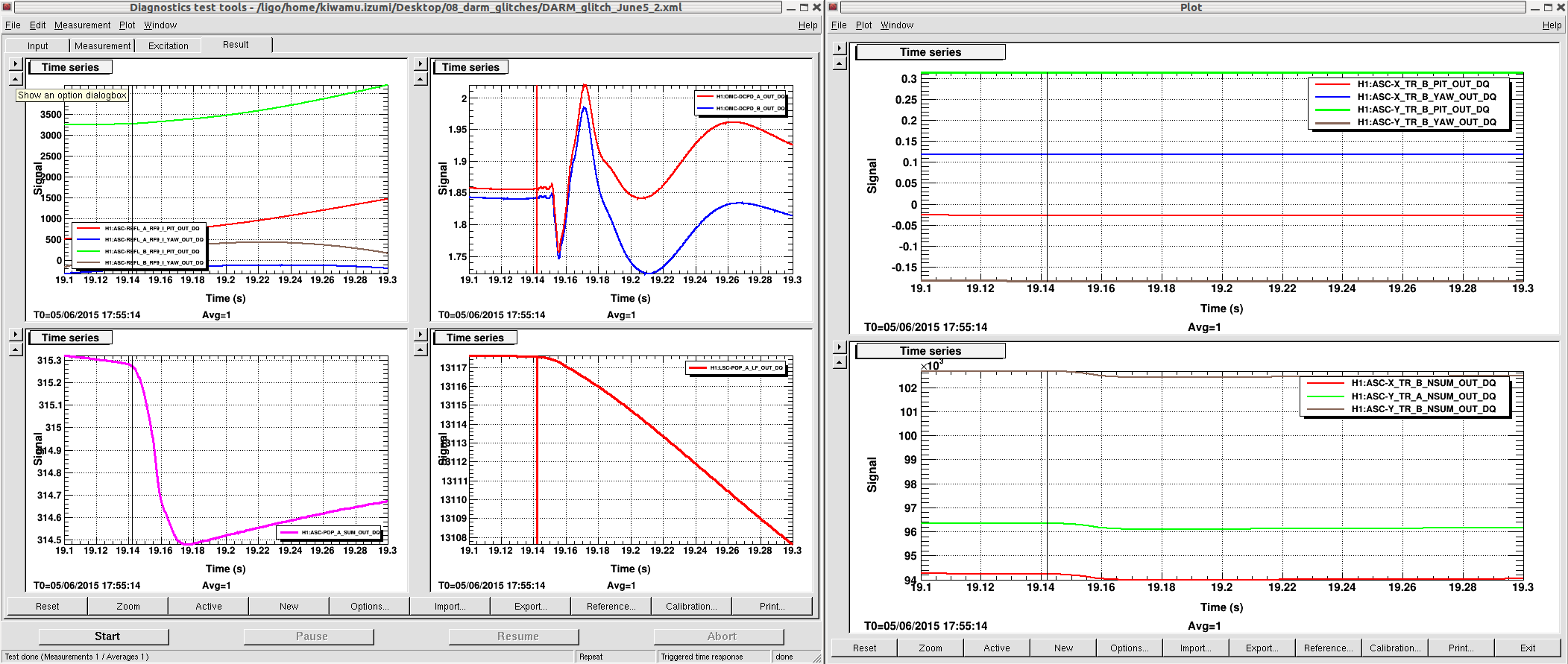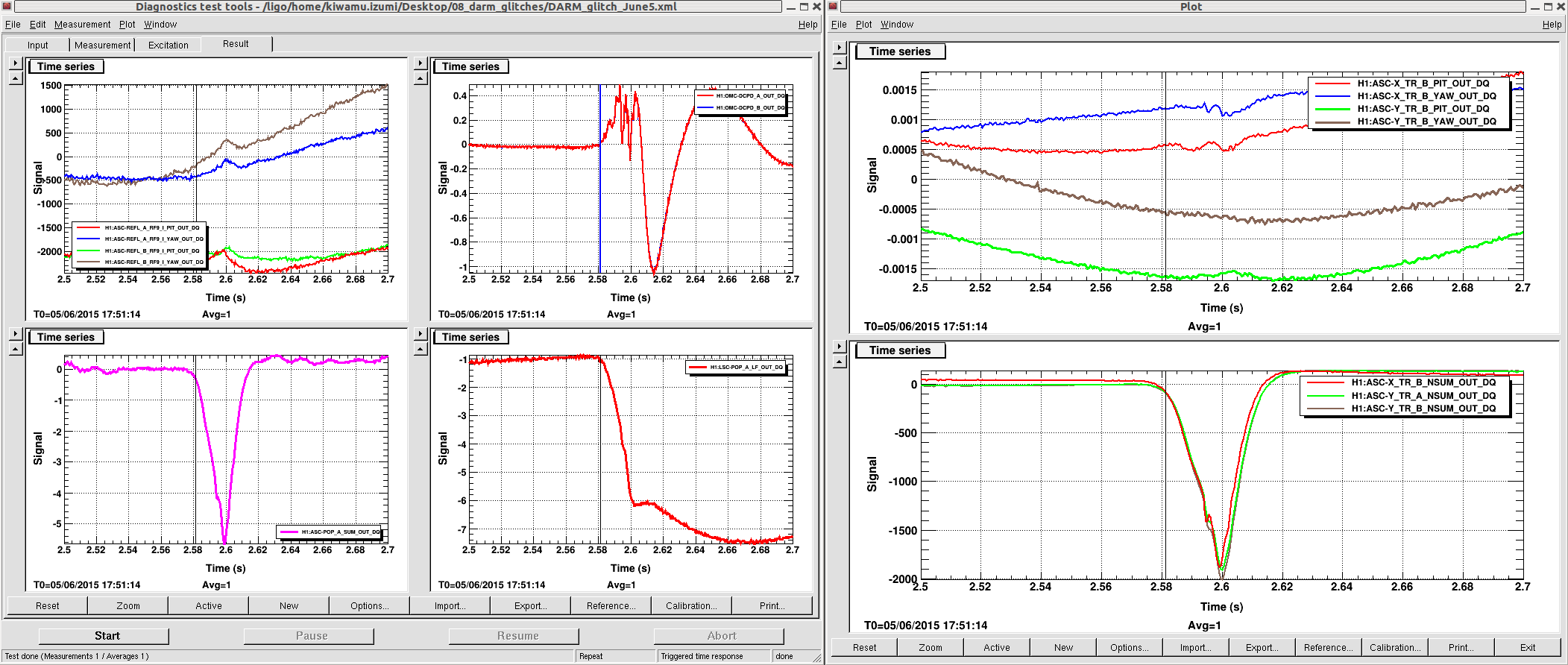ER7 Data Taking started 2015 June 3 at 14:00:00 pdt, 21:00:00 utc, 1117400416 gps.
As of this morning, 2015 June 9, we have accumulated approximately 33 hours of "analysis-ready" coincident data between LHO and LLO. H1 has collected approximately 77 hours of analysis-ready data. L1 has collected approximately 37 hours of analysis-ready data. We have approximately 5 days left in the run plan for ER7.
At the beginning of ER7 Data Taking, H1 was configured and calibrated for operation at ~17 W of input power. Over the weekend its input power was raised to 24 W. This resulted in a few percent error in the calibration and operating configuration. We have restored the input power for H1 back to 17 W and will operate it in this configuration for the remainder of ER7. This is to deliver data to the analysis groups from a known characterization of the detector.
Where we are with regard the JRPC ER7 page (https://wiki.ligo.org/LSC/JRPComm/EngRun7):
Requirements
Detectors
Stable and reliable locking of H1 and L1 in configurations that could plausibly serve in an observing run
Best effort to have similar sensitivities, but no requirement stated
State reporting by Guardian and ODC
Calibrated h(t) channel (see T1300950 for O1 requirements)
Expect L1 calibration accuracy of 20% amplitude & 10-20deg phase from 10 Hz to 2kHz. Aiming for 20% amplitude and 20 deg phase from 2kHz to 5 kHz.
Expect H1 calibration accuracy within a factor of 2 in amplitude; no phase requirement. - delivered 2015 June 2
Sufficient automation to be controllable by operators - achieved, guardian is working well
Hardware injections - hardware and software installed, injections have been carried out and confirmed by analysis groups
Blind Injections Implementation and Testing
approximately 7 days of data taking - in progress, the most stringent is the CBC coincidence requirement of 48 hours, of which we have 33 hours to date
Requirements checklist for ending the run:
CBC:
Would like >2 days coincident science data
Lock periods >4 hours benficial for CBC detchar investigations
(Request) Test H1 and L1 coherent HW injections
CW:
CW hardware injections for at least one interferometer
More than 75 hours of L1 DC-readout data and more than 50 hours of H1 DC-readout data
Stochastic:
Carry out and recover a stochastic injection.
Burst:
Would like >2 days coincident science data
Test EM follow-up infrastructure (EM Processor, PE codes, ...) with coherent HW injection in H1 and L1.
Detailed progress in acheiving these goals is discussed every day at 1:00 pm pdt at the JRPC ER7 Run Status meeting on teamspeak JRPC channel, during the period of the run.
















